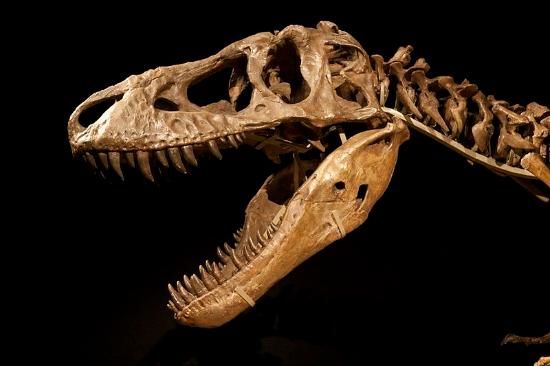Fate of Auctioned Tarbosaurus Yet to be Determined
An almost complete skeleton was sold for more than a million dollars, but what will become of this rare specimen?
/https://tf-cmsv2-smithsonianmag-media.s3.amazonaws.com/filer/20120531095010tarbosaurus-skeleton.jpg)
What will become of the auctioned Tarbosaurus skeleton? Paleontologists have been wondering about the illicit dinosaur’s fate ever since it was sold for more than a million dollars late last month. Even though the dinosaur was probably illegally collected from Mongolia, Heritage Auctions officials snarled at their critics and decided to go ahead with the auction anyway. And even though a last-minute restraining order halted the dinosaur’s immediate transfer to an unknown buyer, no one knew what was going to happen next.
For now, at least, the controversial tyrannosaur specimen isn’t going anywhere. Robert Painter, the lawyer who obtained the restraining order against the dinosaur’s sale, has issued a press release stating that the dinosaur is now being examined to determine its origin. “In addition to agreeing to the inspection,” the release says, “Heritage Auctions has, with full permission from its consignor, promptly disclosed to the attorney for the Mongolian President all of the available information related to provenance, chain of custody, shipping manifests and import/export.”

That doesn’t mean the Tarbosaurus is safe. Even if the dinosaur was illegally collected, it may have been legally imported to the United States and still eligible for sale. The mostly complete tyrannosaur could still disappear into someone’s private collection. Even though the dinosaur is part of Mongolia’s prehistoric heritage and should go home to its country of origin, the ultimate fate of this Tarbosaurus has yet to be determined. I haven’t heard any updates about a Tarbosaurus leg that was pulled from auction at Christie’s pending a similar investigation into its provenance.
This isn’t just about the legality of selling dinosaurs. It’s about what happens to a country’s natural history. Too often, significant specimens disappear into private collections where they are rendered effectively useless to scientists. This also cheats the public. It’s true that only a fraction of dinosaurs ever collected go up on display, but paleontologists require a large sample of dinosaurs to investigate anatomy, variation, evolution and other biological information preserved in dinosaur skeletons. Those findings filter through to exhibits, books, documentaries and even Hollywood films. Indeed, while members of the public may not get to see every dinosaur up close and personal, public museums keep those remains in the public trust and draw from those specimens to flesh out the world of the dinosaurs. In a private collection, a dinosaur is robbed of its scientific context and becomes just a decorative prop for the affluent. If you’ve got money to burn, buy a skeletal cast—they are cheaper and easier to mount.
Paleontologist Victoria Arbour also contemplated the strange distrust of paleontologists that cropped up in this controversy. On her blog Pseudoplocephalus, she wrote:
The role of museums is to conserve artifacts for the long haul—not just a few years, not just this generation, but theoretically for hundreds and hundreds and hundreds of years. Museums also facilitate scientific research (thus contributing new knowledge to society), and education (passing new and old knowledge to members of society). … Because these are publicly-supported institutions, their role is to conserve cultural and natural history artifacts for the people, and so the whole concept of fossils being locked away from the public in museums is largely incorrect.
Indeed, if museums put everything they had out on public display, visitors would probably complain about all the bone fragments, mammal teeth and pieces of turtle shell. Even if museums pick and choose what they display, the science that comes out of their collections influences the public presentation of paleontology. That’s why I hope the Tarbosaurus is saved for science. Every dinosaur contains stories about its life and evolution in its skeleton, and sending the Tarbosaurus back to Mongolia would be a first step in allowing paleontologists to draw out those prehistoric tales.
/https://tf-cmsv2-smithsonianmag-media.s3.amazonaws.com/accounts/headshot/RileyBlack.png)
/https://tf-cmsv2-smithsonianmag-media.s3.amazonaws.com/accounts/headshot/RileyBlack.png)